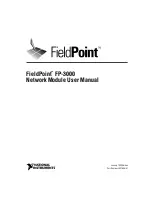
Figure below illustrates the converter sample to transceiver lane mapping operation in the transport layer.
Each converter sample has N bits, M converters per ADC/DAC device, and S samples per converter (M)
per frame clock cycle. The transport layer operates at full rate or FRAMECLK_DIV=1.
1. The application layer or user logic data path interfaces directly with the transport layer through the
Avalon-ST data bus if the application layer operates in frame clock domain. If the application layer
operates at a different clock domain than the frame clock domain, add a FIFO for the clock domain
crossing.
2. You have to reorder the samples so that sample 0 of converter 0 is located at LSB of the Avalon-ST data
bus, followed by sample 1 of converter 0 (if S>1) or sample 0 of converter 1 (if S=1). The most signifi‐
cant bits (MSB) of the Avalon-ST bus has a sample of S -1 of converter M-1. For example, if S=4 and
M=4, the most significant bits will be occupied by sample 3 of converter 3.
3. In this example, there is no control word because CF=0. Control bits are added if CS>1. Depending on
the value of CS and N, the number of tail bits added is N'-N-CS. For example, N'=16, N=12 and CS=2,
the number of tail bits added to form a nibble group (NG) is 2.
4. The JESD204B IP core implements the data transfer in big endian format. Data is reshuffled in big
endian format before crossing to the link clock domain through an adaptor.
5. The data is arranged so that the L0 is always on the right (LSB) in the data bus interfacing with the
JESD204B IP core. In big endian implementation, the oldest data (F0) is placed at the MSB in L0. 32-
bits or 4 octets of data are transferred to the IP core in one link clock cycle. For example of F=8, 2 link
clock cycles are needed to transfer all 8 octets to the IP core.
UG-01142
2015.05.04
TX Path Data Remapping
5-19
JESD204B IP Core Design Guidelines
Altera Corporation
Send Feedback
















































